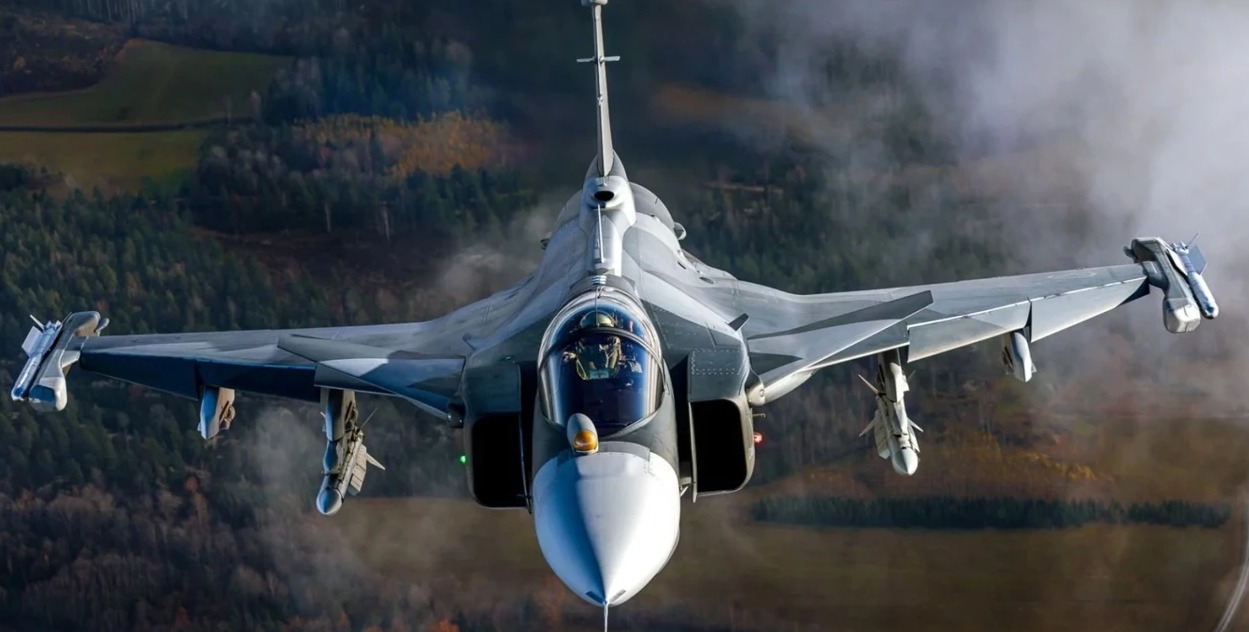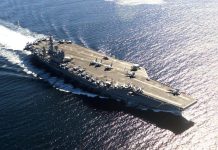Saab offers all Gripen export customers the same high-end capabilities as enjoyed by Sweden, the primary operator of the combat aircraft. This challenges the norms of conditional defense exports and signals a shift toward greater operational sovereignty.
In March 2025, U.S. President Donald Trump raised eyebrows by suggesting that the US allies would receive a “dumbed-down” version of the F-47 Next Generation Air Dominance (NGAD) fighter.
The remark, delivered during a campaign-style speech, reinforced longstanding concerns among U.S. partners that Washington does not always share its most advanced technologies, even with its closest allies.
On April 10, Swedish defense firm Saab delivered a pointed response. Speaking to Janes, the maker of the Gripen combat aircraft emphasized that all its jets, whether flown by Sweden, Brazil, or Thailand, are delivered with the same top-tier hardware and software.
There are no scaled-down versions. Instead, customers are allowed to tailor the aircraft to their needs by integrating national communications, weapons, or mission systems.

According to Saab, this flexibility guarantees what it calls “freedom of action,” allowing users to operate independently of external controls or approvals.
That level of openness stands in sharp contrast to U.S. export practices. The F-35, for instance, comes bundled with American oversight: maintenance pipelines, software locks, and a tightly controlled supply chain.
Buyers must depend on the U.S. Department of Defense for critical software updates and system maintenance. However, if diplomatic relations deteriorate, this access can be revoked, as evidenced by Turkey’s removal from the F-35 program in 2019 following its acquisition of Russian air defense systems.
“No Black Boxes”: Gripen’s Open Architecture Advantage
Gripen buyers enjoy a level of independence that highlights Saab’s unique approach to defense aviation. For example, Brazil has equipped its Gripen fleet with domestically developed targeting pods and weapons, customizing the jets to meet its specific operational requirements.
Similarly, Thailand has successfully integrated U.S.-manufactured AIM-120 missiles into its Gripen aircraft, showcasing the platform’s ability to adapt to a range of systems. South Africa, on the other hand, has replaced its communication systems with tailored national solutions to ensure secure and independent operations.
Saab’s approach is particularly relevant in the context of a shifting global defense landscape. Non-aligned nations are increasingly interested in acquiring defense systems that are not tied to the geopolitical agendas of major powers like the United States or China.
These countries are seeking advanced capabilities that provide them with operational autonomy without the burden of external oversight or political strings. Saab’s philosophy aligns precisely with this demand, offering high-performance aircraft with full operational access, customizable systems, and the promise of true independence.
The Gripen Alternative In A Polarized Market
The U.S., by comparison, has long guarded its best capabilities. Export variants of aircraft like the F-16 and even the earlier F-15 were often delivered without top-tier sensors or weapons.
Several U.S. partners have faced multi-year delays in receiving software upgrades or munitions approvals, even post-contract. The rationale, usually framed as risk management, often leaves buyers frustrated and searching for alternatives.
Sweden, with its smaller size and neutral posture, can afford to play a different game. Gripens are built to operate flexibly and independently—traits born out of Sweden’s need to counter Russian threats without the benefit of a large alliance.
That design philosophy now gives it an edge on the global stage. Sweden’s own Gripens received radar and electronic warfare upgrades in 2023, which were also offered to export customers. In Saab’s model, there is no second-tier user.
U.S. aircraft have world-class technology, but often involve dependency. Russian or Chinese platforms may offer lower upfront costs but carry diplomatic and security risks. Saab positions itself in the middle: a Western-aligned supplier with no geopolitical baggage and a clear offer—your aircraft, your rules.
Selling Control, Not Just Aircraft
Brazil’s Gripen program illustrates this approach. Saab partnered with Brazilian aerospace firm Embraer for final assembly, ensuring technology transfer and local job creation. Pilots and technicians train on systems they own, not lease.
Nonetheless, Saab’s model presents certain limitations. Its production capacity is smaller than that of Lockheed Martin or Boeing, and deliveries can be slower.
An open export policy, while attractive to some buyers, carries inherent risks. Should a recipient state undergo a political realignment, there is potential for Swedish-origin technology to be exposed to rival powers or diverted without adequate safeguards. This concern grows as the company expands into politically complex markets.
Meanwhile, next-generation programs like the U.S. Air Force’s NGAD (Next Generation Air Dominance) promise capabilities well beyond the Gripen’s current configuration. These include projected advancements in stealth, sensor fusion, and AI-assisted combat systems. The NGAD platform will likely exceed the Gripen in raw performance metrics, though its access will be limited to a small group of U.S. allies and may involve strict usage conditions.
Saab does not seek to compete directly on such parameters. Instead, its emphasis is on offering operational autonomy and full sovereign control.
The company has used recent international attention—including high-level political commentary—to reinforce its position as a supplier that does not impose end-user restrictions or staggered capability releases. In doing so, it appeals to a growing segment of buyers dissatisfied with the conditionalities attached to Western or Russian systems.
While the Gripen is compact, its design reflects a broader principle: a modern fighter delivered without conditions, built to evolve alongside its operator’s needs, without external dependencies. Saab claims that for nations seeking capability without compromise, the Gripen represents more than a weapon system; it reflects a strategic choice toward autonomy.
- Via: ET News Desk
- Mail us at: editor (at) eurasiantimes.com




